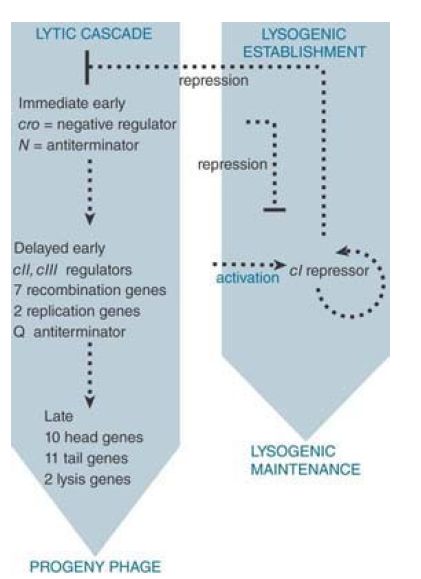

النبات

مواضيع عامة في علم النبات

الجذور - السيقان - الأوراق

النباتات الوعائية واللاوعائية

البذور (مغطاة البذور - عاريات البذور)

الطحالب

النباتات الطبية


الحيوان

مواضيع عامة في علم الحيوان

علم التشريح

التنوع الإحيائي

البايلوجيا الخلوية


الأحياء المجهرية

البكتيريا

الفطريات

الطفيليات

الفايروسات


علم الأمراض

الاورام

الامراض الوراثية

الامراض المناعية

الامراض المدارية

اضطرابات الدورة الدموية

مواضيع عامة في علم الامراض

الحشرات


التقانة الإحيائية

مواضيع عامة في التقانة الإحيائية


التقنية الحيوية المكروبية

التقنية الحيوية والميكروبات

الفعاليات الحيوية

وراثة الاحياء المجهرية

تصنيف الاحياء المجهرية

الاحياء المجهرية في الطبيعة

أيض الاجهاد

التقنية الحيوية والبيئة

التقنية الحيوية والطب

التقنية الحيوية والزراعة

التقنية الحيوية والصناعة

التقنية الحيوية والطاقة

البحار والطحالب الصغيرة

عزل البروتين

هندسة الجينات


التقنية الحياتية النانوية

مفاهيم التقنية الحيوية النانوية

التراكيب النانوية والمجاهر المستخدمة في رؤيتها

تصنيع وتخليق المواد النانوية

تطبيقات التقنية النانوية والحيوية النانوية

الرقائق والمتحسسات الحيوية

المصفوفات المجهرية وحاسوب الدنا

اللقاحات

البيئة والتلوث


علم الأجنة

اعضاء التكاثر وتشكل الاعراس

الاخصاب

التشطر

العصيبة وتشكل الجسيدات

تشكل اللواحق الجنينية

تكون المعيدة وظهور الطبقات الجنينية

مقدمة لعلم الاجنة


الأحياء الجزيئي

مواضيع عامة في الاحياء الجزيئي


علم وظائف الأعضاء


الغدد

مواضيع عامة في الغدد

الغدد الصم و هرموناتها

الجسم تحت السريري

الغدة النخامية

الغدة الكظرية

الغدة التناسلية

الغدة الدرقية والجار الدرقية

الغدة البنكرياسية

الغدة الصنوبرية

مواضيع عامة في علم وظائف الاعضاء

الخلية الحيوانية

الجهاز العصبي

أعضاء الحس

الجهاز العضلي

السوائل الجسمية

الجهاز الدوري والليمف

الجهاز التنفسي

الجهاز الهضمي

الجهاز البولي


المضادات الميكروبية

مواضيع عامة في المضادات الميكروبية

مضادات البكتيريا

مضادات الفطريات

مضادات الطفيليات

مضادات الفايروسات

علم الخلية

الوراثة

الأحياء العامة

المناعة

التحليلات المرضية

الكيمياء الحيوية

مواضيع متنوعة أخرى

الانزيمات
Lambda Immediate Early and Delayed Early Genes Are Needed for Both Lysogeny and the Lytic Cycle
المؤلف:
JOCELYN E. KREBS, ELLIOTT S. GOLDSTEIN and STEPHEN T. KILPATRICK
المصدر:
LEWIN’S GENES XII
الجزء والصفحة:
6-6-2021
2768
Lambda Immediate Early and Delayed Early Genes Are Needed for Both Lysogeny and the Lytic Cycle
KEY CONCEPTS
- Lambda has two immediate early genes, N and cro, which are transcribed by host RNA polymerase.
- The product of the N gene, an antiterminator, is required to express the delayed early genes.
- Three of the delayed early gene products are regulators.
- Lysogeny requires the delayed early genes cII–cIII.
- The lytic cycle requires the immediate early gene cro and the delayed early gene Q.
One of the most intricate cascade circuits is provided by phage lambda. Actually, the cascade for lytic development itself is straightforward, with two regulators controlling the successive stages of development. The circuit for the lytic cycle, though, is interlocked with the circuit for establishing lysogeny, as illustrated in FIGURE 1.

FIGURE 1.The lambda lytic cascade is interlocked with the circuitry for lysogeny.
When lambda DNA enters a new host cell, the lytic and lysogenic pathways start off the same way. Both require expression of the immediate early and delayed early genes, but then they diverge: Lytic development follows if the late genes are expressed, and lysogeny ensues if synthesis of a gene regulator called the lambda repressor is established by turning on its gene, the cI gene. Lambda has only two immediate early genes, transcribed independently by host RNA polymerase:
- The N gene encodes an antitermination factor whose action at nut (N utilization) sites allows transcription to proceed into the delayed early genes . The N gene is required for both the lytic and lysogenic pathways.
- The cro gene encodes a repressor that prevents expression of the c1 gene encoding the lambda repressor (essentially derepressing the late genes, a necessary action if the lytic cycle is to proceed). It also turns off expression of the immediate early genes (which are not needed later in the lytic cycle). The lambda repressor is the major regulator required for lysogenic development.
The delayed early genes, turned on by the product of the N gene, include two replication genes (needed for lytic infection), seven recombination genes (some involved in recombination during lytic infection, two genes necessary to integrate lambda DNA into the bacterial chromosome for lysogeny), and three regulator genes. These regulator genes have opposing functions:
- The cII–cIII pair of regulator genes is needed to establish the synthesis of the lambda repressor for the lysogenic pathway.
- The Q regulator gene codes for an antitermination factor that allows host RNA polymerase to transcribe the late genes and is necessary for the lytic cycle.
Thus, the delayed early genes serve two masters: Some are needed for the phage to enter lysogeny, and the others are concerned with controlling the order of the lytic cycle. At this point, lambda is keeping open the option to choose either pathway.
 الاكثر قراءة في مواضيع عامة في الاحياء الجزيئي
الاكثر قراءة في مواضيع عامة في الاحياء الجزيئي
 اخر الاخبار
اخر الاخبار
اخبار العتبة العباسية المقدسة

الآخبار الصحية















 قسم الشؤون الفكرية يصدر كتاباً يوثق تاريخ السدانة في العتبة العباسية المقدسة
قسم الشؤون الفكرية يصدر كتاباً يوثق تاريخ السدانة في العتبة العباسية المقدسة "المهمة".. إصدار قصصي يوثّق القصص الفائزة في مسابقة فتوى الدفاع المقدسة للقصة القصيرة
"المهمة".. إصدار قصصي يوثّق القصص الفائزة في مسابقة فتوى الدفاع المقدسة للقصة القصيرة (نوافذ).. إصدار أدبي يوثق القصص الفائزة في مسابقة الإمام العسكري (عليه السلام)
(نوافذ).. إصدار أدبي يوثق القصص الفائزة في مسابقة الإمام العسكري (عليه السلام)


















